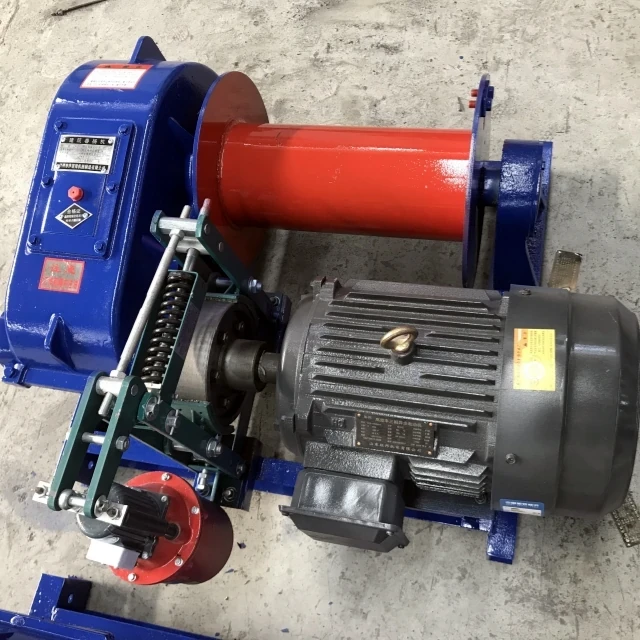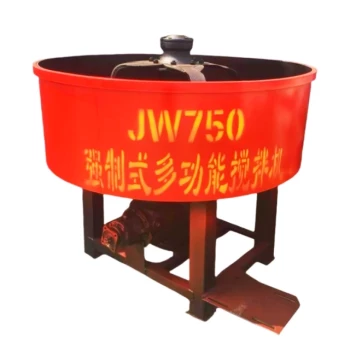When selecting a winch for industrial or construction applications, speed isn’t just about getting the job done faster—it’s a critical factor in safety, load management, and operational efficiency. Whether you’re lifting steel beams on a construction site or maneuvering heavy equipment in a factory, understanding winch speed ratings and their implications can mean the difference between seamless operations and costly failures.
This guide breaks down the differences between slow-speed and high-speed winches, their ideal use cases, and how to balance speed with load capacity and energy efficiency.
Understanding Winch Speed Ratings
Defining Slow-Speed and High-Speed Winches
Winches are categorized by their line speed, measured in meters per minute (m/min):
- Slow-speed winches: Operate at 16 m/min or slower, designed for precision lifting of heavy loads (e.g., 10+ tons). These are often labeled with the model designation 'jM' (for "winch slow-speed").
- High-speed winches: Run at 22 m/min or faster, optimized for lighter loads requiring rapid movement (e.g., transporting materials across a warehouse). These carry the 'jk' designation ("winch high-speed").
Ever wondered why some winches prioritize power over speed? It’s all about physics: slower speeds allow for greater torque, reducing strain on the system when handling massive weights.
Key Applications by Industry
- Construction: Slow-speed winches dominate for lifting steel beams or concrete panels, where control outweighs speed.
- Manufacturing: High-speed winches streamline assembly lines, moving components quickly between stations.
- Marine/Offshore: Hydraulic winches (often slow-speed) provide fail-safe load control in harsh environments.
Speed vs. Operational Requirements
Trade-offs Between Speed and Load Capacity
A common misconception is that faster winches are "better." In reality:
- High-speed winches risk overheating or cable damage under heavy loads.
- Slow-speed winches maintain stability with heavy weights but may delay time-sensitive tasks.
Example: Using a high-speed winch to lift a 15-ton generator could overstress the motor, while a slow-speed model ensures safe, controlled movement.
Safety Implications of Over-Speeding
Industrial winches are the backbone of heavy lifting, but misapplying speed can lead to:
- Snapped cables from abrupt stops or excessive tension.
- Load swings that endanger workers (a risk mitigated by hydraulic winches’ precise speed control).
- System failures due to overheating or overloading.
Hydraulic winches, like those from Garlway, often include fail-safe mechanisms (e.g., automatic brakes) to prevent these issues.
Choosing the Right Winch
Industry Standards and Compliance
Always verify that winches meet:
- OSHA/ANSI guidelines for load ratings and safety features.
- ISO certifications for durability (critical in corrosive environments like offshore rigs).
Cost-Efficiency and Energy Consumption
- Electric winches: Easier to install but may lack consistent power for heavy loads.
- Hydraulic winches: More energy-efficient under high loads but require existing hydraulic systems.
Pro Tip: For long-term projects, slow-speed hydraulic winches often reduce energy costs by minimizing peak power demands.
Conclusion: Matching Winch Speed to Your Needs
Selecting a winch isn’t about finding the "fastest" or "strongest" option—it’s about aligning speed with your operational priorities:
- Heavy loads? Prioritize slow-speed winches for control and safety.
- Rapid movement? High-speed models excel with lighter materials.
- Harsh conditions? Hydraulic systems (like Garlway’s) offer reliability and built-in safety.
By understanding these principles, you’ll optimize performance while protecting both equipment and personnel.
Need a winch that balances power and precision? Explore Garlway’s range of hydraulic and electric winches designed for industrial durability.
Related Products
- Electric and Hydraulic Winch for Heavy Duty Applications
- Warn Winch Windlass Boat Trailer Winch
- Electric 120V Boat Winch by Badlands
- Best 18000 Pound Drum Anchor Trailer Winch
- 12000 lb Heavy Duty Electric Boat Winch
Related Articles
- How Electric Winches’ Engineering Enhances Efficiency and Safety in Heavy-Duty Applications
- How Electric Winches Outperform Hydraulic Systems in Heavy-Duty Applications
- How to Choose and Optimize a Winch for Any Job: Power, Capacity, and Environment
- How Industry-Specific Electric Winch Configurations Boost Efficiency and Safety
- How Electric Winch Safety Features Prevent Catastrophic Industrial Accidents




















